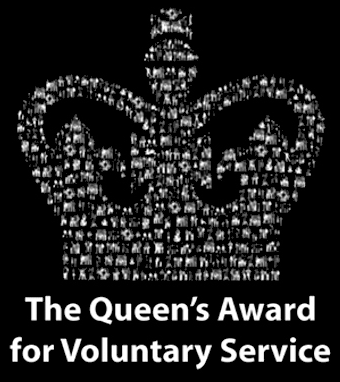A fascinating timeline of the Derbyshire Children’s Holiday Centre
1891 Harry Sykes, a commercial traveller and lay preacher at St Werburgh’s Church and his friend Arnold, son of Sir Henry Howe Bemrose, walking through the West End of Derby, a greatly deprived area, met a group of young boys and with their parents’ permission arranged to take them on a day trip to Skegness.

Early days for the Centre
1892 A terrace house was rented in Skegness High Street to cater for the growing number of children taken on annual holidays; subsequently a double fronted house was taken on Roman Bank and In this second year 223 children enjoyed a week’s holiday.
1896 Sir Henry Howe Bemrose and a group of County Borough of Derby worthies raise funds to purchase land in Skegness from The Earl of Scarbrough, to build the Centre.
1898 The Derby Children’s Seaside Home, 1 Scarbrough Avenue, Skegness, opened by her Grace the Duchess of Rutland.
1914 The Red Cross in Skegness took the Home for use as a convalescent home for wounded soldiers until 1917.
1915 An extract from The Derby & District Directory of 1915 :-
DERBY AND DERBYSHIRE CHILDREN’S SEASIDE HOME, SKEGNESS
Obiects : To rescue and maintain destitute and orphan children; to send for short periods to the seaside a limited number of both boys and girls who stand in need of pure air and good food; to look specially after poor crippled children and to assist suitable youths to emigrate
1917 With the partial lifting of travel restrictions in the summer a limited number of children enjoyed a holiday at the Home.
1918 The programme of holidays resumes after WW1.
1921 To resolve a poor financial position annual ‘Buttercup Flag Days’ were inaugurated which with the annual Bazaar yielded the core of funding that made the Home viable. These events lasted until the outbreak of the second world war.
1938 Due to the escalating demand for holidays and made possible by the generosity of two benefactors, a new wing was built on the east side of the home and opened for business in May.
1939 The advent of WW2 brought holidays to a halt and Harry Sykes returned to his home in Derby where he died on the 30th December 1940. His funeral service took place at a packed St Werburgh’s Church with family members, city dignitaries, Centre Trustees and friends and old boys. For fifty years Harry Sykes had dedicated his life to the Derby and Derbyshire Children’s Seaside Home, as it was known in 1940. A life dedicated to serving many thousands of less fortunate children from the city and county.
1940 During the war the Home was occupied by residents evacuated from an old peoples’ home in Boston.
1946 Trustees undertook needed repairs and maintenance to the Home and re-opened it in July.
1947 Following one of the worst winters on record food rationing was tightened with recollections from children recalling the trying circumstances. Food parcels, clothing and toiletries arrived at the Centre from ‘old boys’ in far flung places, such as Australia. The revival of ‘Buttercup Day’ in July helped to alleviate conditions.
1950 The ‘50s brought an end to rationing and a dawn towards prosperity but not withstanding the new Welfare State the Home represented the only hope of a holiday for the less fortunate children of the city and county.
1953 In this year Jim and Frances (Mac) Stuart were appointed to run the Home which they did successfully through the swinging 60s, the turmoil of the 70s until 1985.
1960 The changing social scene brought a differing criteria of need for the alleviation of distress and development needs of the children. Increasingly legislative requirements ensured protection for the children and a guiding principle for the management of the Centre.

The Centre in 1976
1963 The Charity is registered by the Charity Commission under the number 218063.
1980 To meet the changed socio-economic needs of children Trustees launched an appeal, as a Centenary Project, to provide new art and craft rooms with the addition of a new sports hall and gymnasium.
1991 A substantial renovation of the Centre saw the introduction of new art and craft rooms, a new sports hall and gymnasium.
1993 HRH the Duchess of Gloucester officially opened the New Sports Hall as the completed Centenary Project.
1995 The County Council axed the funding programme it provided. Notwithstanding an outcry in the press, appeals from the public and petitions to Downing Street, In September the Centre closed.
1997 Following the creation of a fundraising team and successful submissions to the National Lottery and other grant making organisations, the Trustees appointed a Managing Secretary (MS) to re-organise the Charity and create a fundraising arm. The MS set up a referral system for schools and social services departments to recommend children for holidays, with a Home Visitors Team to ascertain children’s individual requirements; the model we continue with today.
1998 The Centre re-opened to provide holidays for the less fortunate children resident within the City and County of Derbyshire.
2012 In February the Charity celebrated the appointment of Sir Henry Every Bt., 13th Baronet, as its first Patron. Sir Henry holds a long record of service to the County across many spheres of community life.

The Princess Royal visits
2015 Her Majesty the Queen grants to the Charity ‘The Queen’s Award for the Voluntary Sector’ the charitable equivalent to the MBE. The citation reads; ‘Ensuring disadvantaged Derbyshire children receive caring, organised and safe residential holidays, developing self-esteem and aspirations’.
2016 The 125th anniversary of the first holidays undertaken was celebrated across the County with numerous significant events. HRH Princess Anne, the Princess Royal, visited the Centre and unveiled a plaque recording the year and the success which enabled the trustees to increase the number of holidays from 450 to 660 per year.


